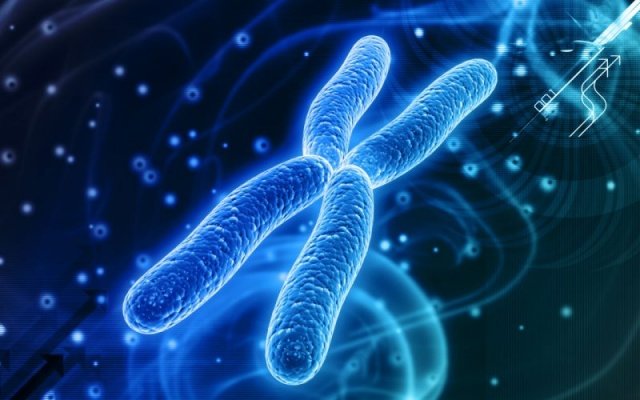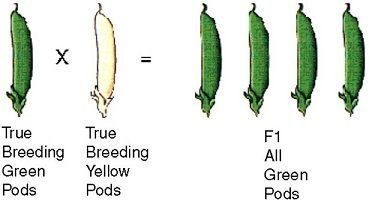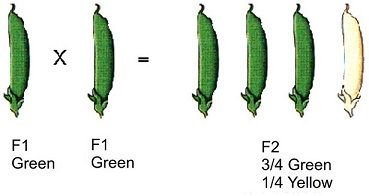
If I were to be delegated a hundred thousand steem power for every time I have seen couples having issues about some traits in their children, I would be close to being a whale on steemit by now. Unfortunately, life does not work that easy, or does it?
'Black kettle' dispensing 'white milk' situations of inheritance
Isn't that caption a bit racist? Perhaps not. I once witnessed a marriage of ten years hitting a snag simply because the wife gave birth to an albino. Reason? The husband claimed the wife must have cheated simply because there has never been a history of albinism in both his family and the wife's family. Ignorance!
Perhaps you might be thinking the albinism case is funny, here is a funnier one. Angela Ihegboro and Ben Ihegboro are a London based, black Nigerian couple. It was like a miracle when 35 years old Angela gave birth to a white baby.
She’s a miracle baby
"The first thing I said was, what the flip? Of course, she is mine. My wife is true to me. Even if she hadn’t been, the baby still wouldn’t look like that.”
Those are the words of Angela and Ben respectively. As a Nigerian in Nigeria, perhaps that would have ended quite differently. Although, had it been that the geneticists were not quick to have intervened in their case, things might have turned out differently. The husband gave such a sweet speech, right? Now let us turn the table around to a white couple giving birth to a black baby. Oh! Perhaps we should not bother.
What could have made a made a black couple to give birth to a white baby?
Scientists gave different reasons for this kind of rare situation to occur. It could have been as a result of unique mutation of the gene of the baby. If such is the case, the gene might become inheritable. Also, the gene that conferred the whiteness on the baby could have been a long-dormant one passed from the parent even though such trait did not appear in the parent. The condition even could have been a mutated version of albinism.[1]
Pattern of trait inheritance
In the early days of the history of science, most biologists and naturalists did notice aberrant individuals such as bleeders and albinos in many natural populations, but the frequency of such characters was so low that they were regarded as 'accidents of nature'. Thus, very little serious efforts were made to study how these traits were inherited.
In those times, studies were based on measurement and quantitative traits because they represent the most predominant variations in any population. Nevertheless, it was noticed that some traits persist in some families. A good example is haemophilia in the English royal family. It was also observed that dwarfinism in man is easily transmitted from parents to offsprings.
While both haemophilia and albinism may not have been observed in the immediate offspring of affected individuals, usually, such traits reappear in second or later generations.
Mendel's Experiment


The observations made Mendel postulate what is known today as law of segregation. He postulated that hereditary factors are particulate and that they maintain their distinctness from one generation to the next. The easiest working hypothesis is to assume that a hereditary factor or unit conditions the expression of an observable trait. If more than one alternative of a trait exists, such as a white and red flower in a plant, then more than one alternative to the hereditary factor must exist.

The hereditary factor which conditions the expression of a trait is referred to as gene. When an individual is capable of producing only one alternative form of a trait, that individual is said to be true-breeding for such trait and the individual is said to be homozygous for the trait under consideration.
When an individual is capable of producing the two alternatives forms of a trait, such an individual is said to be heterozygous for that trait.
In the cross involving smooth and wrinkled peas, the first filial generation seeds were smooth, thus, the wrinkled trait is not expressed in that generation. Therefore, the smooth character is said to be dominant while the wrinkled trait is recessive to smooth. The same thing happened in the cross involving green pod and yellow pod pea plant. However, the wrinkled trait re-appeared in the second generation when the progenies from the first generation were selfed or mated.
Segregation: why incest among siblings is dangerous!
From the result of Mendel, we have learnt that recessive traits are not usually expressed in the first generation but capable of re-appearing in the second or future generations. This is one the reasons incest among offsprings of the same parents should not be encouraged. Incest might trigger a deleterious but recessive trait to appear in the gene pool of the population. For example, if an AA individual marries and an AS individual, the sickling trait will not appear among their offsprings since it is recessive. However, there is likelihood that some of their offsprings will be carrying the trait in recessive conditions. If two of such offsprings commit incestous act which results in pregnancy, there is likelihood that the resulting baby will be a sickler. This should serve as enough deterrent for the advocator of incest among siblings.
Summary
Traits are inherited across generation according to some relatively predictable pattern. It was not really understood until Mendel performed several experiments using the pea plant. Traits are represented by genes which is made up of two alleles. When the alleles are of the same type, the trait is said to be homozygous, otherwise, it is heterozygous. Homozygous conditions can be dominant or recessive. When a trait is heterozygous, one of the alleles would be dominant and one recessive. Recessive alleles are not reflected in the first generation but are likely to be in the second generation. The pattern follows Mende's law of segregation.
I hope to continue this topic in my next post.
Thank you all for reading!
Image references
[1]image 1
[2]image 2
[3]image 3
Text references
[1]nypost.com: black parent gave birth to white baby
[2]khan academy: law of segregation
[3]nature.com: Inheritance of Traits by Offspring Follows Predictable Rules
[4]national library of medicine: An Introduction to Genetic Analysis. 7th edition.

